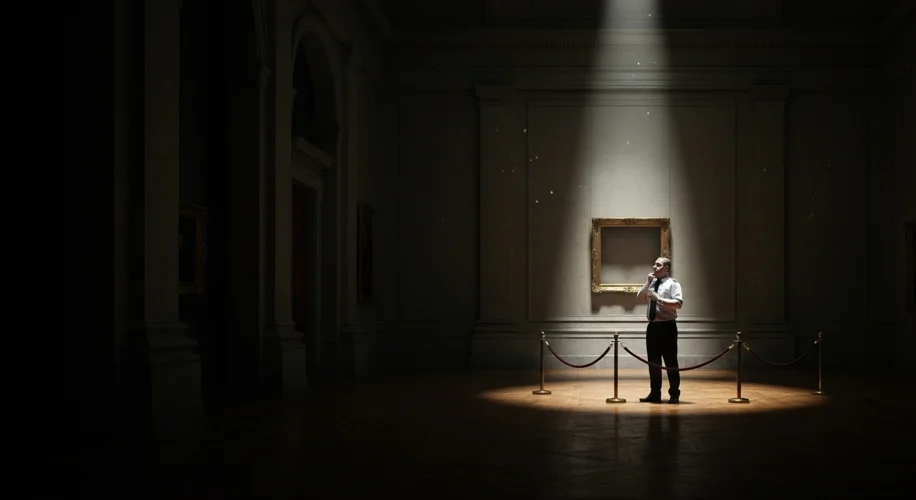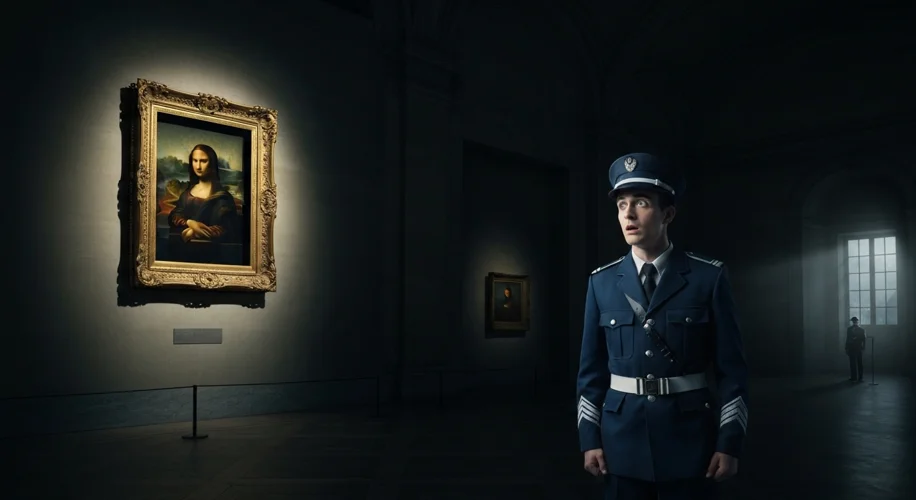The Louvre, a palace of art and history, stands as a glittering beacon of human achievement. Its hallowed halls, once home to French royalty, now cradle treasures spanning millennia. Yet, beneath the veneer of opulence and security, the Louvre has also been a stage for audacious acts of theft, where priceless artifacts have vanished into the night, leaving behind only whispers of daring thieves and the chilling echo of loss.
Imagine this: Paris, the year is 1911. The world is abuzz with tales of innovation and burgeoning modernity, but on a fateful August morning, a different kind of story begins to unfold within the world-renowned Louvre Museum. A story that would etch itself into the annals of art history and criminal lore. The Mona Lisa, Leonardo da Vinci’s enigmatic masterpiece, was gone.

The disappearance was discovered not by a vigilant guard, but by an artist who arrived to sketch the iconic portrait. The frame remained, stark and empty against the wall, a gaping wound in the heart of the collection. Panic rippled through the museum and then across Paris. How could such a masterpiece, a symbol of Renaissance genius, simply vanish? The ensuing investigation was a whirlwind of speculation and misdirection. The police, initially baffled, considered various theories, from wealthy private collectors to German agents seeking to humiliate France on the eve of war. Even Pablo Picasso and his friend, the poet Guillaume Apollinaire, were briefly suspects due to their association with a former Louvre employee who had previously stolen Iberian sculptures.
The thief, it turned out, was Vincenzo Peruggia, an Italian immigrant who had worked at the Louvre. His motive, he claimed, was patriotic: to return the Mona Lisa to Italy, where he believed it rightfully belonged. For two years, Peruggia kept the painting hidden in his modest Parisian apartment, concealed within a trunk. He had simply walked out of the museum with it, hidden under his smock, after a night spent in a closet. His capture came in 1913 when he attempted to sell the painting to an art dealer in Florence. The world rejoiced as La Gioconda was returned to her rightful place, forever changing the public perception of the painting from a revered artwork to a global icon, partly due to the sensational publicity surrounding its theft.
But the Mona Lisa heist, while perhaps the most famous, was not an isolated incident. The Louvre, and other great cultural institutions, have long been magnets for those with a taste for the extraordinary, the illicit, and the immensely valuable. These heists are not just about monetary gain; they often speak to deeper desires – a yearning for possession, a thrill of defiance, or even a misguided sense of cultural reclamation.
Consider the theft of the “Venus de Milo” from the Louvre in the early 20th century, though less dramatic than the Mona Lisa’s disappearance, it highlights the ongoing vulnerability of such immense collections. While this specific theft is less documented than others, it serves as a reminder that the desire to possess iconic artifacts transcends time. Security measures, while constantly evolving, have always been a step behind the ingenuity and audacity of thieves.
In the annals of art theft, the story of the “Siberian Seven” and the theft of the “Yakut Diamonds” from the Hermitage Museum in St. Petersburg in 1988 also stands out. While not the Louvre, the Hermitage is a sister institution in its grandeur and the value of its holdings. A group of seven thieves, operating over several months, meticulously replaced priceless diamonds with fakes, eventually making off with stones valued at millions. Their intricate plan involved careful timing, knowledge of the museum’s routines, and a chilling blend of deception and boldness.
These heists, from the enigmatic smile of Mona Lisa to the glittering allure of stolen jewels, are more than just criminal acts. They are intertwined with the history of the objects themselves, the cultural narratives they represent, and the very human drama of desire, ambition, and the eternal cat-and-mouse game between preservation and plunder. The allure of these stolen treasures continues to captivate our imagination, reminding us that even within the most secure of sanctuaries, the echoes of the past can be both breathtakingly beautiful and alarmingly vulnerable.
The cultural impact of these thefts is profound. The disappearance of an artifact doesn’t just leave a void on a museum wall; it creates a rupture in our shared heritage. It prompts discussions about the ethics of ownership, the repatriation of artifacts, and the very nature of art’s value. The fame of a stolen object often outshines its pre-theft renown, transforming it into a legend. The Mona Lisa, once just a painting, became a global phenomenon partly due to its two-year vanishing act. It’s a testament to how such audacious crimes can rewrite the cultural narrative of an object, embedding it deeper into collective memory.

